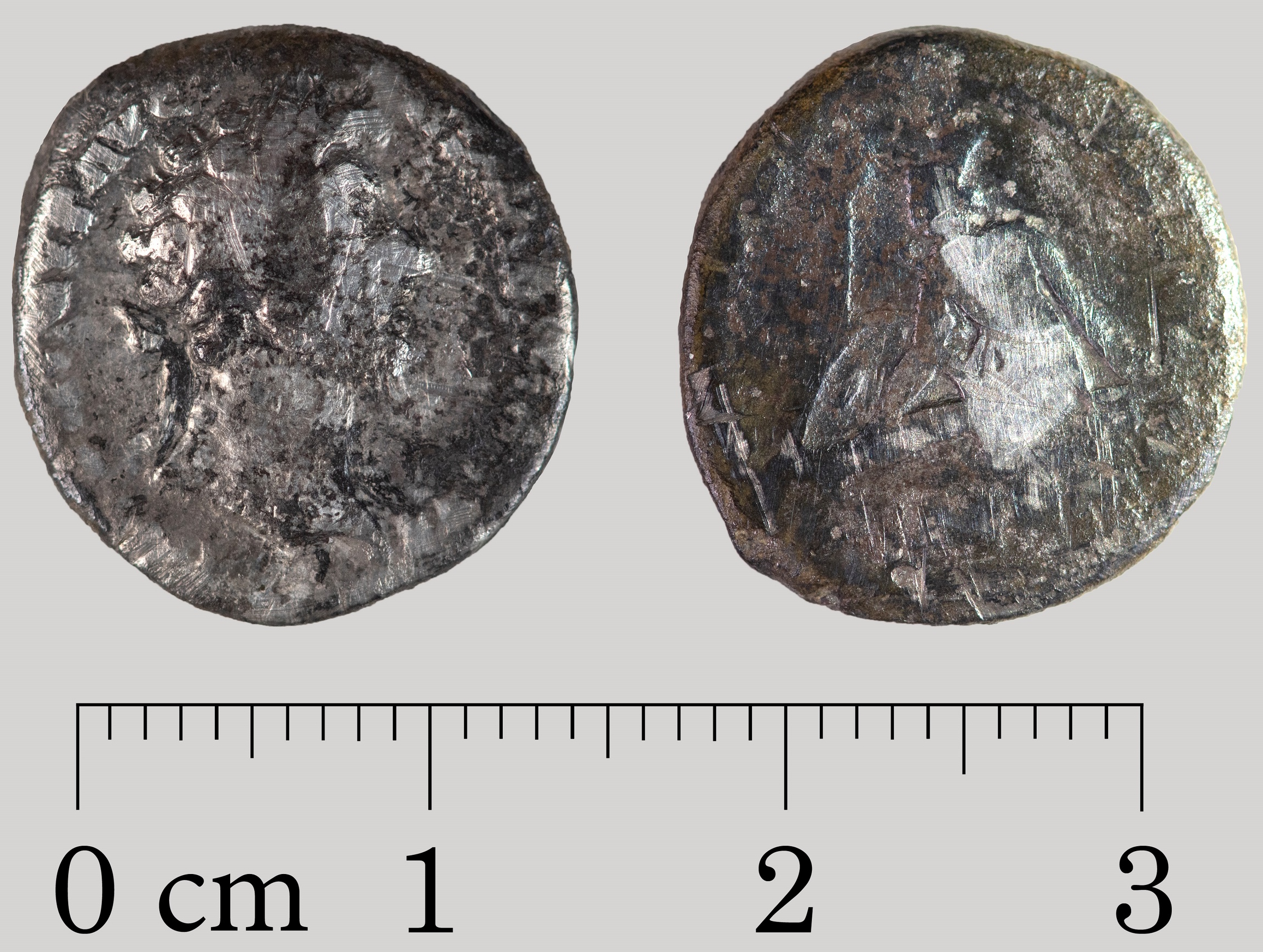An eight-year-old boy playing in a sandbox in Bremen discovered an 1,800-year-old Roman coin that is one of only three such finds ever made in the city.
Young Bjarne came upon the small silver disc in his elementary school sandbox in August of last year. He didn’t know what it was, but it was round and shiny so he did what anyone would do and brought it home with him. He and his family later contacted the Bremen state archaeologist, sending pictures of his treasure. The object was hard to make out from the photos, so Bjarne brough the coin in person to the Bremen state archaeologist, Prof. Dr. Uta Halle.
She was able to identify it as a silver denarius from the reign of Emperor Marcus Aurelius (r. 161-160 A.D.). The denarius is heavily worn and weighs 2.4 grams, evidence that it was minted during a time of currency debasement when the silver content plummeted with rising inflation.
Firmly east of the Rhine boundary line, the state of Bremen was never part of the Roman Empire. The city of Bremen dates to the 7th century at the earliest. That area of northwestern Germany was inhabited by the Chauci tribe. They had dealings with Rome (providing troops for auxiliary regiments), but often joined with other Germanic tribes to oppose Rome on the battlefield. Any Roman coins that made their way that far north likely reached the area via barter, washed up in the River Weser, or as a souvenir carried by an auxiliary or other world traveler.
According to the Bremen Monument Protection Act, the coin is an archaeological object that belongs to the state, but its status is still subject of conversation between officials and Bjarne’s family. Meanwhile, it has been cleaned and conserved. Prof. Halle hopes it will soon be put on display at the Focke Museum, the Bremen State Museum for Art and Cultural History.

O Tempora!
It is entirely possible that there is only this single “Silver Denarius”, and someone in Bremen put it in the sandbox. However, if that is not the case, I would be interested in, where the sand was sourced from, where to delivered (other sand boxes, builing sites? etc), and if there is possibly more of it.
Even if the state of Bremen was never part of the Roman Empire, there were people with money bags, and –of course– the sand might have come from the Empire.
That would be super cool if the sand was sourced/ imported from somewhere within or near the Empire
This is a fairly rare issue with Armenia capta reverse. Interestingly enough for me this was the first type of silver Denarius I ever owned being bought by my girlfriend at the time, soon to be Wife. One day when I was on break from classes I found a horrific example of a Marcus Aurelius Denarius at a local antiques mall for $250 US and became obsessed on account of my reading of Meditations. Today that coin would sell on EBay for $15-20, thank goodness the owner wouldn’t allow for payments. I told my girlfriend how amazing it was to see something that old, lamenting the price and she said don’t worry just save up and besides your birthday is coming. I made it clear that her spending $250 was not something I wanted her to do. However, living in Los Angeles she found a seller on Ventura Blvd. Valley Coins and bought me my first ancient Roman coin, with a fantastic portrait, with the commemorate Armenia Capta reverse struck in buttery high quality silver. Mine has the inscriptions: Obverse ANTONINUS AUG ARMENIACUS / Reverse PM IMP XVIII IMP II COS III ARMEN in exurge.
Female figure in morning seated a shield and sword on the ground – Roman standard flying behind
How strange my first comment appears now that I posted this inquiry ……please delete follow ups if possible 🙂 I truly love the site and your tireless efforts to spread the fascination of discovery, through ingenious questioning and hands on archaeology. Always to inspire all to revel in the timeless benefits & wisdom handed down, through the ages of the unchanging human condition. #SameAsItEverWas